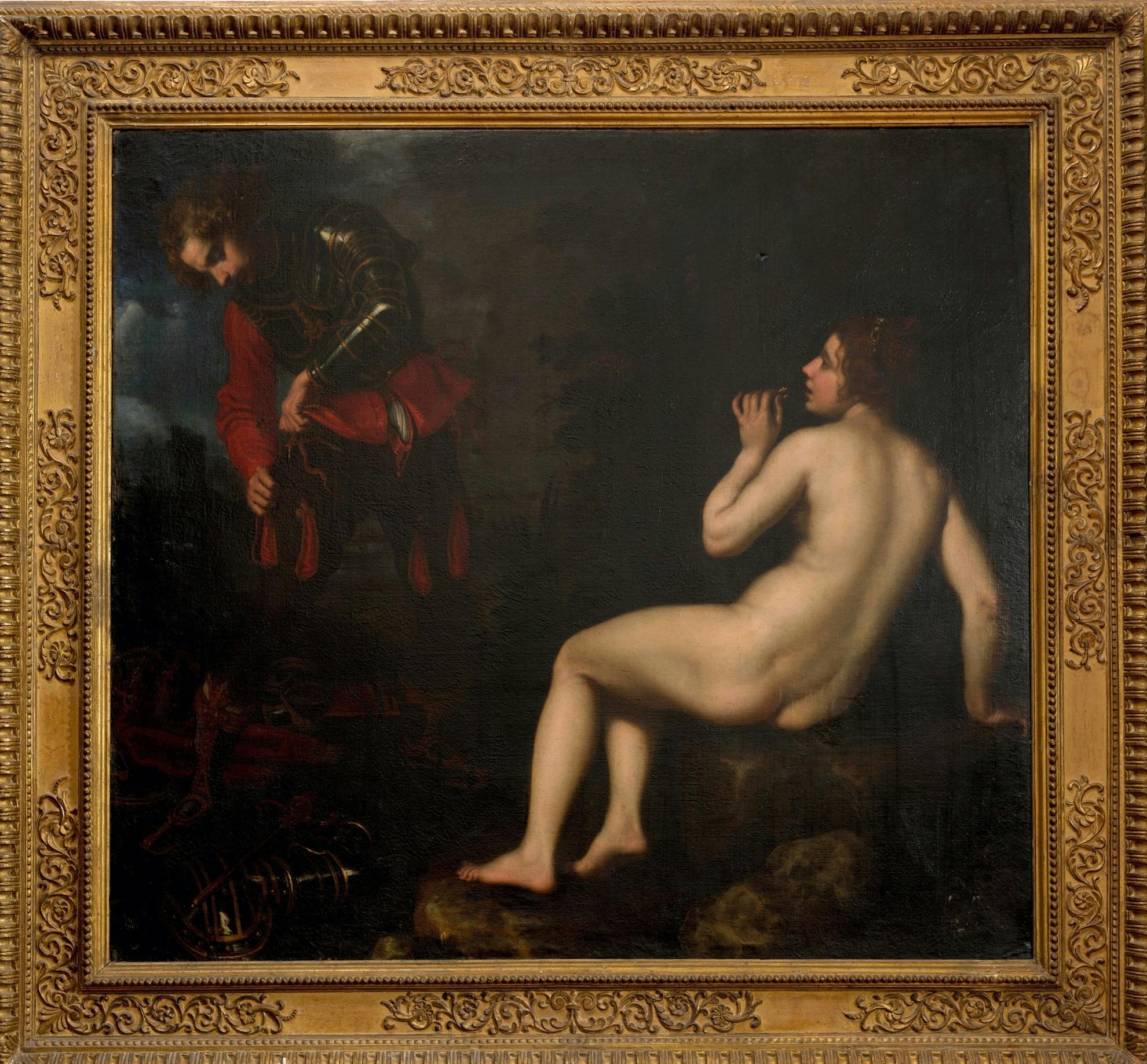Angelica hides from Ruggiero
Giovanni Bilivert (Florence 1585 – 1644)
The canvas shows one of the most loved and reproduced episodes from the Orlando Furioso, narrated between the end of canto X and the beginning of canto XI. The scene takes place in the forest glade overlooking the sea of Brittany, where Ruggiero decides to rest after freeing Angelica from the horrible orc, renouncing his planned return to Spain. Although he had escaped Alcina’s charms on the island, Ruggiero cannot fight the fact that he has fallen in love with the young girl at first sight, on account of her eyes and her beauty (Ruggiero turns and with thick kisses plies/the lady’s breast and sparkling eyes) Overcome with desire, he decides to possess Angelica and thus, at the end of the canto are three memorable verses with an irresistible comic crescendo of emotion as clumsy Ruggiero tries to disrobe, making more and more of a muddle of things. Confused by different throng, Ruggiero did his shining arms undo/Never the task appeared to him so long/For where he loosed one knot, he fastened two.
Bilivert is successful in bringing Ariosto’s verses into a lively and enchanted image, where ut pictura poësis, the young man is intent on quickly removing his armour is unaware that the young girl is already about to swallow a magic ring that will make her invisible, while in the background, even the hippogriff is escaping. There are other versions of these subjects painted by Bilivert in the same period, but slightly different in size or in some of the details. Among these is a smaller canvas in the Palatine Gallery (Inv. 1890/8034), one in Prato (Palazzo degli Alberti, Banca Popolare di Vicenza), and one in Florence in Palazzo Vecchio, as well as a miniature on a stone slab (Florence, Opificio delle Pietre Dure museum) and a small bronze group by Ferdinando Tacca, now in the Louvre. Like the canvas of Rinaldo and Armida by Cesare Dandini (Inv. 1890 no. 3823), Bilivert’s canvas was conceived as an accompaniment to other subjects with the same moral intent, taken from the great epic tales. The scene with Angelica and Ruggiero in particular, signifies the loss of reason caused by man giving in to vice and passion. In the other example, now in the Palatine Gallery and taken from the apartment of the Cardinal Dean, Carlo de Medici, at the Casino Mediceo, Angelica is veiled by a curtain which it is thought was added following criticism of her nudity by the Grand Duchess, Christina of Lorraine. The Uffizi canvas entered the Florentine galleries’ collections in 1953.
Frame from 20th century
